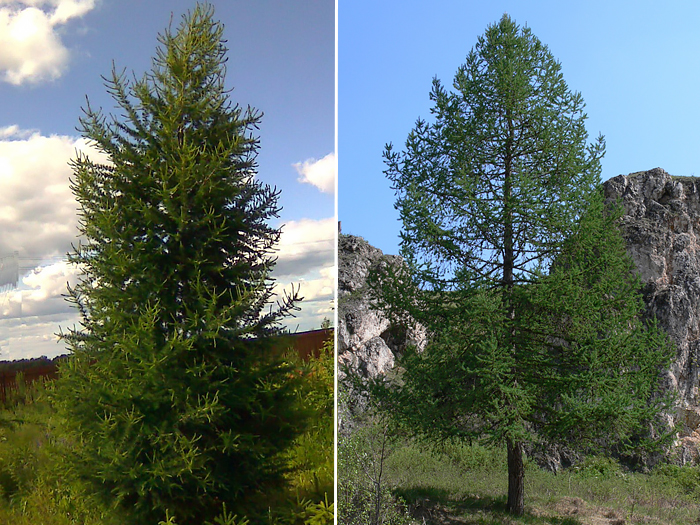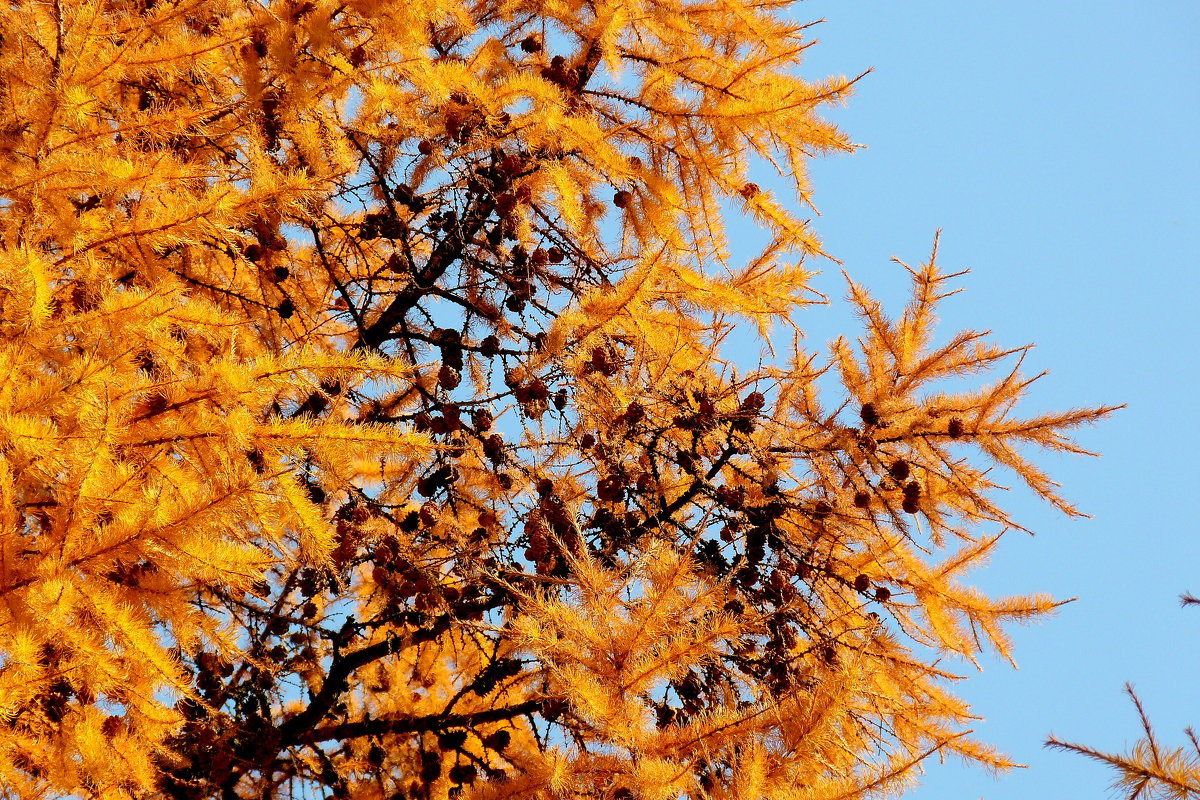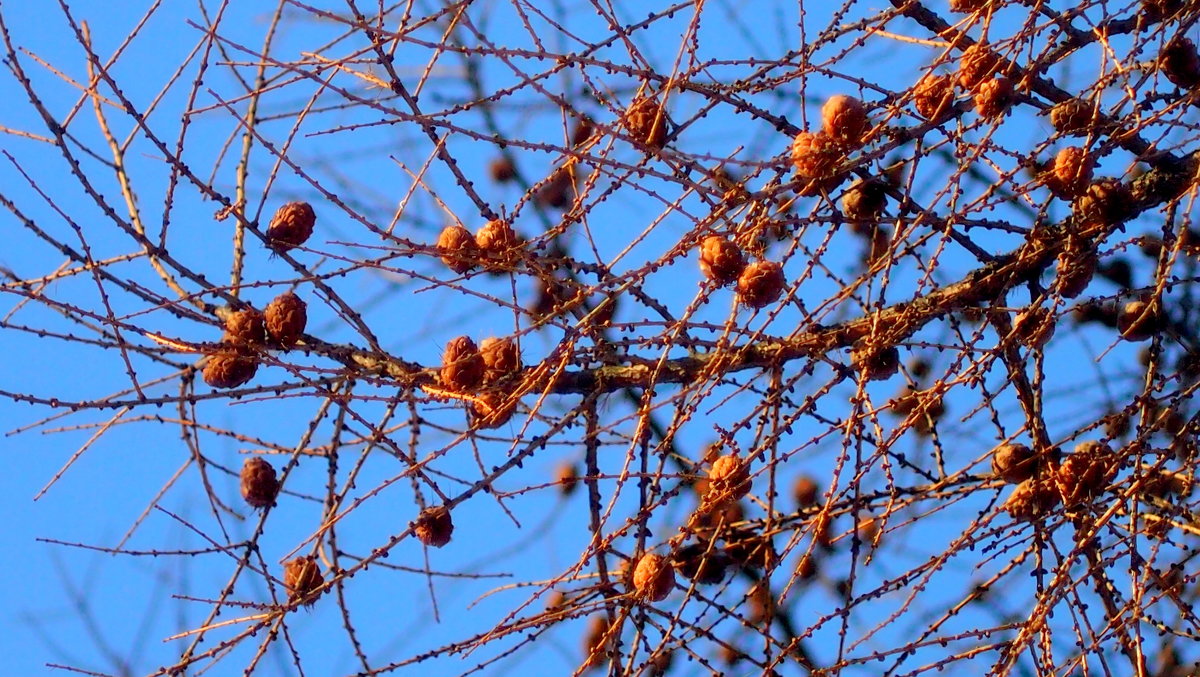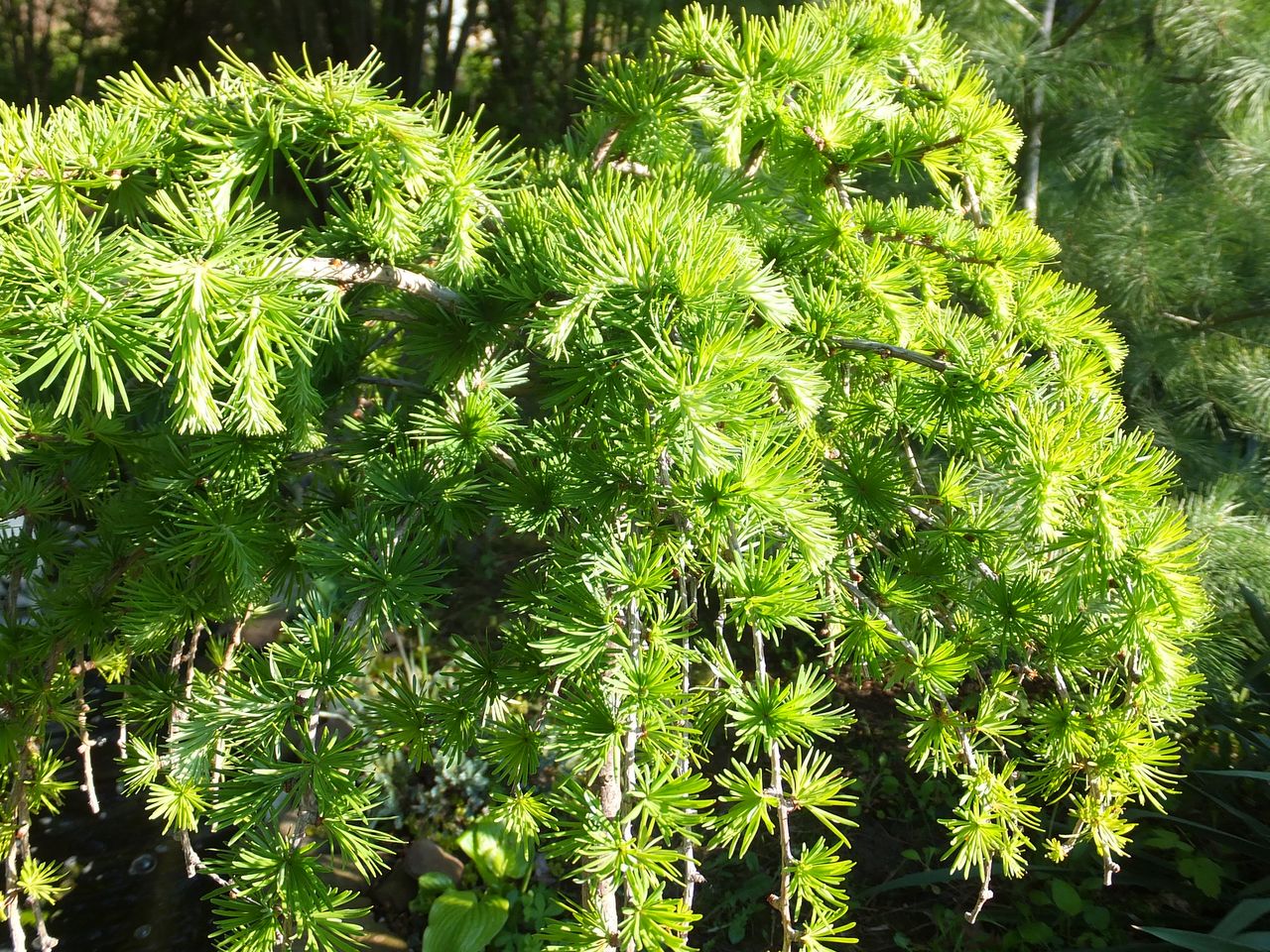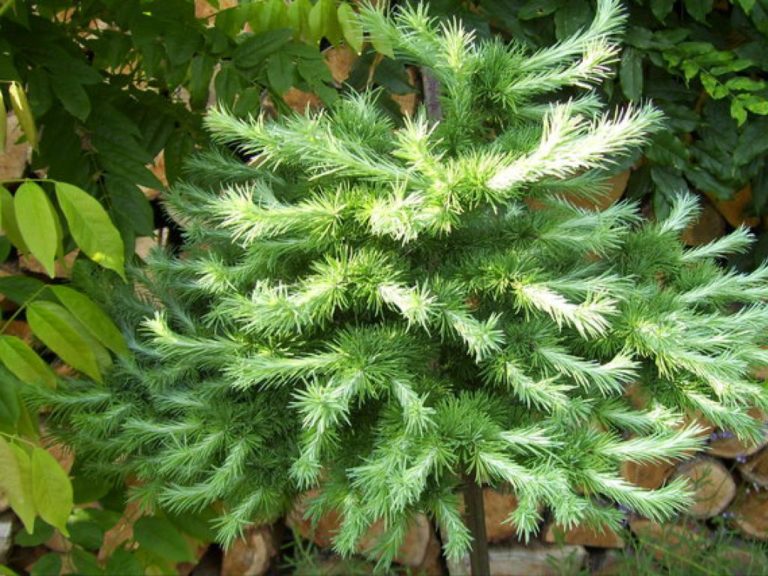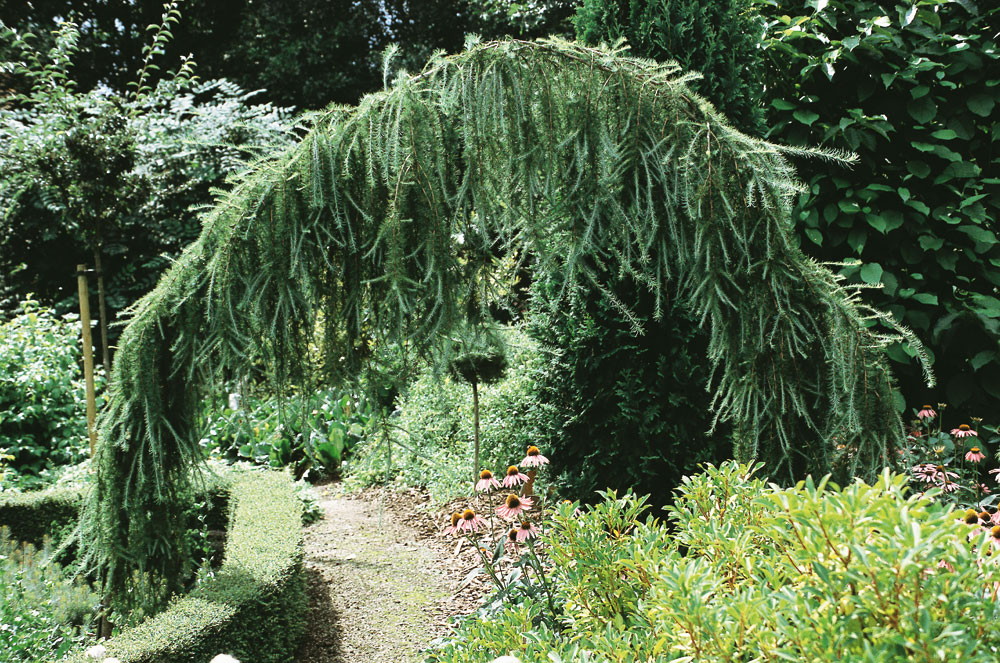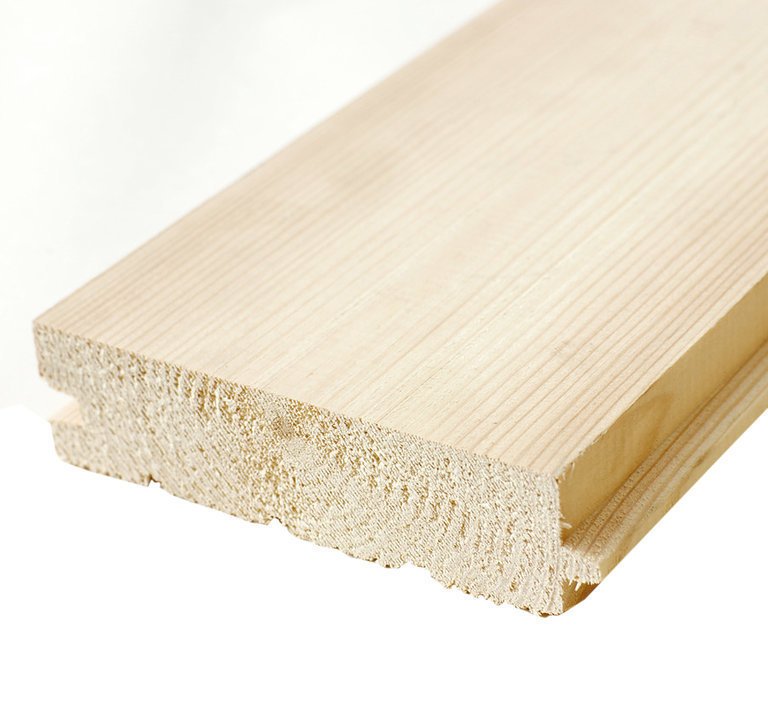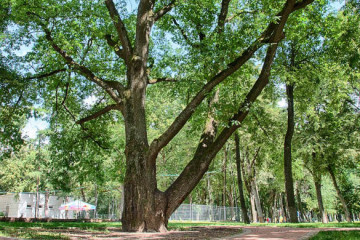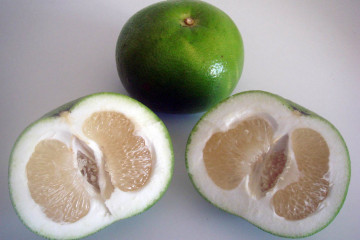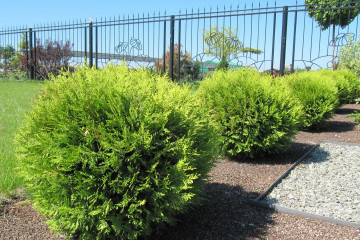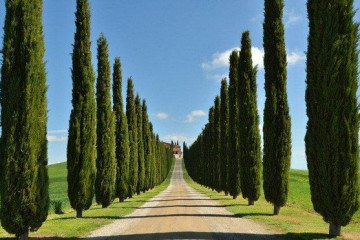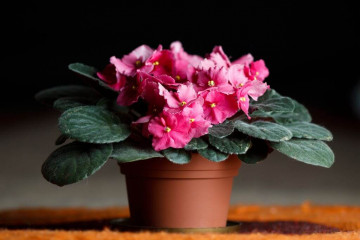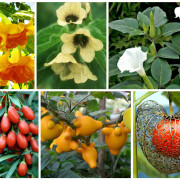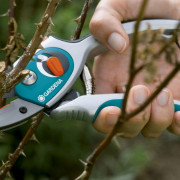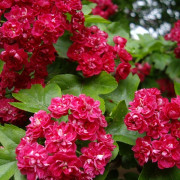What does larch look like, crown shape and root system
Content:
Not everyone knows what larch is. How does it look in nature, what are its properties, what is the difference from other conifers, how many species does this breed have, a description of this unique tree will be offered in this article.
Description of culture
Science biology says that larch belongs to gymnosperms, class Conifers, higher plants of the Pine family. About 150 million years ago, these unique plants dominated the planet. Today gymnosperms are represented by conifers, which include larch.
There are several varieties of larch, but some of them are very similar in appearance and growing conditions. The average height of the tree reaches 50 m. The trunk is straight, covered with bark in the form of gray or brown scales. In girth, some larch trees reach more than 1 m. The branches have long annual shoots and short perennial ones and grow at right angles to the trunk, bending upwards.
The length of the larch needles is 3-4 cm. The needles are soft, delicate green in color. On long shoots, the needles are arranged in a spiral, the needles grow in bundles of 30-50 pieces, which makes the crown of the larch openwork.
Larch crown shape
The crown shape of larch at a young age has the form of a cone. Over time, as the tree grows taller and older, it takes on a round, egg-shaped shape.
The larch root system can adapt to different types of soil. The tree adapts to the type of soil due to the plasticity of its roots, forming adventitious processes. In swamps, sands, on stone mounds or in a dry hollow, larch grows, using the feature of its roots to be located over a vast area near the surface of the earth. The lower branches below can take root, which further strengthens the roots and helps the tree withstand strong winds.
How it blooms
At 15 or 20 years old, the tree begins to bloom. Larch blooms in April or May. The flowering period lasts 1.5 weeks. Together with the new needles, fruits appear in the form of small cones. Since the tree is monoecious, it has female and male flowers. Female flowers look like small soft cones of green or red-purple color, similar to small roses. Male spikelets form round light green spikelets. Moreover, heterosexual cones grow on one branch.
With the arrival of September, the cones ripen. They have a rounded conical shape about 4 cm in size. The scales acquire a brown color, they are coarser, more woody. The winged seeds fly away after the buds are ripe, but in order for them to grow new trees, zero temperature and high humidity are necessary. An obstacle on the way from a seed to the appearance of a tree is the great love of birds and mammals of forest dwellers for seeds. The yield of new trees varies from 5 to 9 years. After scattering the seeds, the cones can hang on the tree for many years.
Where it grows and how much
Larch is a coniferous and cold-loving tree. In the Northern Hemisphere, where larch grows, more than 70% of the forests are larch tracts. It is found in Siberia, the Far East, North America, Western and Northern Europe, the Himalayas and Tibet.How many years a larch lives depends on the place where it grows.
Why does it drop needles
Larch is very fond of light, which is one of the most important factors in its successful growth. She is sometimes called the daughter of the Sun. Its unpretentiousness to soils and harsh climate is surprising. The question arises, is larch a coniferous or deciduous tree if it sheds its foliage like other deciduous trees?
Of course, larch is a coniferous tree, but with the onset of autumn, its needles turn yellow, and by the onset of winter, the tree sheds it, like its deciduous counterparts. This is its distinctive feature from other conifers. This is where the name of this tree comes from.
Interesting Facts
Surely many did not know that:
- Larch wood has unique properties. The high resin content makes larch so strong and resistant to decay that buildings and things made from larch wood are preserved for centuries. With a long stay in water, this tree acquires such hardness that it is impossible to drive in or pull out a nail without breaking it. During excavations in Gorny Altai, items from larch were found, the age of which is more than 25 thousand years.
- The larch root wood is much stronger than the trunk. Products made from rhizomes are practically immortal, although they are laborious in processing. A ladle made in the 18th century is still kept in the Zagorsk Museum. It holds 1.5 buckets of liquid.
- Siberians in ancient times knew about the healing properties of this tree. And today, fragrant and tasty chewing gum is very popular, made from its resin, containing phytoncides and trace elements that protect the oral cavity from infections and various diseases. Completely replaces toothpaste if necessary.
- This tree has practically no waste after processing. One cubic meter of its wood makes it possible to obtain up to 700 liters of ethyl alcohol, 200 kg of cellulose, 1.5 thousand meters of artificial silk, and then rosin, essential oil, paint, acetic acid and many other useful substances are extracted from the remaining waste.
How to distinguish larch from pine
Visually, in nature, pine and common larch differ in such a way that it is impossible to confuse them. Everyone knows what larch looks like and how it differs from pine. But in the form of wood, these trees are difficult for an ignorant person to distinguish. When buying building materials, you need to be able to distinguish between these breeds so as not to overpay, since larch is more expensive.
First of all, you should pay attention to the bark of the wood. Larch has a dense structure, deep cracks and a reddish bark. Pine has a thinner brownish-yellow bark.
Pine does not have a clear pattern, while larch board has a marble pattern. When in water, the larch will drown. If you set fire to wood, the larch board will catch fire later and will burn longer.
The use of larch in landscape design
Due to the variety of types of larch, it is used not only in industry, but is also in great demand in landscape design. There are more than 20 of its species in the world, many of which are capable of being a worthy decoration for any garden.Due to the structure of the branches and needles, the tree does not impede the penetration of sunlight for planting in the area under the branches.
The openwork crown, which changes color from pale green in spring to golden in autumn, looks beautiful both on a rocky hill and when decorating a garden path. It is advisable to grow tall, slender trees in large parks and gardens. For small garden plots, a stem is the best choice. In the autumn, when the tree sheds its needles, it is convenient to prune branches and form a crown.
- For the design of garden plots, types such as European repens larch and Japanese pendula are most often used. Repens has a weeping crown a little more than a meter in size and reaches a height of 1.5 m, which is very convenient in the limited space of a small garden.
- Japanese pendula grows up to 8 m and has a crown size of up to 4 m. Over time, the branches form a green-blue train around the trunk, which looks very beautiful in any garden.
- In addition to boles, dwarf breeds such as Kaempfer are used to decorate flower beds and paths. This species is a shrub that looks like a green pillow, it will decorate an alpine slide or path in the garden.
Use in construction
Due to its unique properties, larch is an elite building material. The high resin content of wood protects wood products from destruction by moisture, making wood equal in strength to stone. Contact with both fresh and salt water increases its strength and makes it indispensable in shipbuilding and the construction of underwater structures.
Over time, this tree does not collapse, but becomes stronger. The gum content and resinousness in the wood keep it from rotting and parasites. In terms of strength and suitability for construction, larch is not inferior to oak, and in some ways even surpasses it. The straight and knot-free trunk produces excellent quality lumber. Planks and planks have a beautiful pattern and 12 shades of color: from brown to golden.
Finishing materials of amazing beauty from Siberian and Dahurian larch are in increasing demand in the building materials market. Products made from this wood are highly resistant to mechanical and climatic influences and retain their appearance during the entire service life.
This tree does not conduct heat well and has the ability to accumulate and accumulate it. Decorating a log house with such material allows you to keep the house warm in winter and cool in summer.
In addition to resistance to decay, fire and pests, strength and beauty, larch has medicinal properties. The high content of nutrients, antioxidants and phytoncides in wood has a beneficial effect on the human body. A house built of wood of this species will keep you healthy and relieve you of the everyday fatigue and stress of the city bustle. Even many years after construction, the wood does not lose its healing properties.
The disadvantages of larch as a building material are its high cost and difficulty in processing.Cargo transportation from Siberia, the impossibility of rafting along the rivers, the high consumption of processing mechanisms and funds make a house made of such wood an expensive pleasure.
Larch is not only a unique tree, but also a mysterious one. Some of her riddles have already been solved, but something else is shrouded in mystery. In ancient times, for many tribes, this tree was cult. And today it is recognized as a symbol of Russia. But it is not only history and myths that make this tree mysterious. Scientists have noticed that the stump of a felled tree continues to grow for many years. It turned out that groups of larch trees that live in the nearest zone around a felled tree form a single root system. Thus, the fantastic ideas of the movie "Avatar" about the natural "Internet" are quite real.
Due to the high rate of photosynthesis, larch is a forest-forming species. Thanks to this property, the issue of urban greening can be solved in the future. The experience of Yekaterinburg confirms that this tree is the best choice for gas-polluted city streets. But this is not all the mystery. By the nature of the location of the larch massifs and the chemical composition of their wood, scientists can accurately determine the places where kimberlite pipes emerge and the presence of diamonds. In this way, a diamond deposit was discovered in Yakutia.
Throughout the history of mankind, many facts, discoveries and legends have accumulated about the larch, about what an amazing tree it is in the Northern Hemisphere, which has unusual, unique properties and features. More than 20 species belong to this breed, which makes it possible to use it not only in construction, but also in garden design, geological exploration, medicine and simply enjoy the beauty of larch forests.
